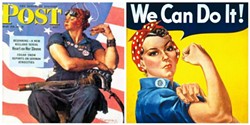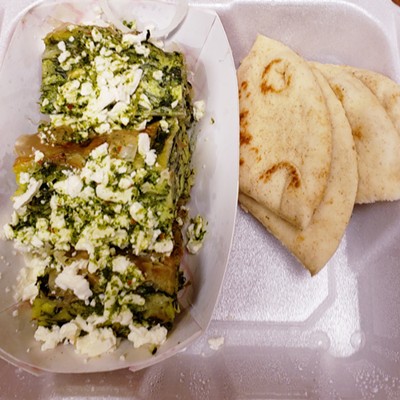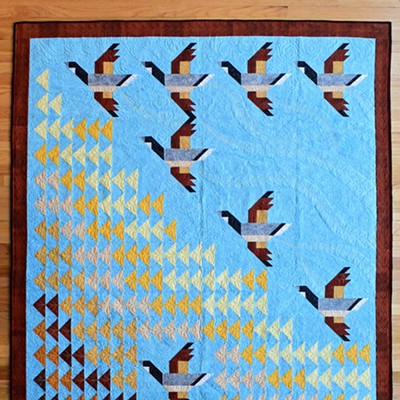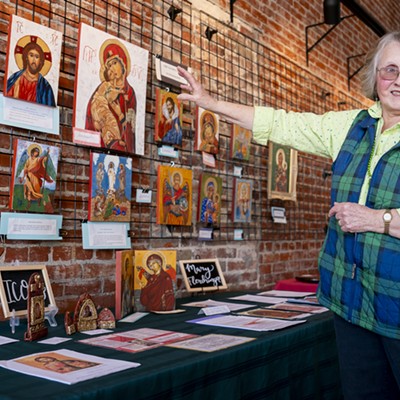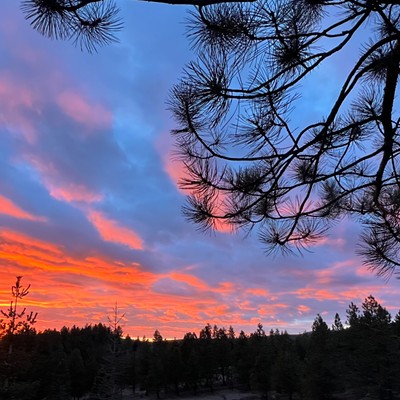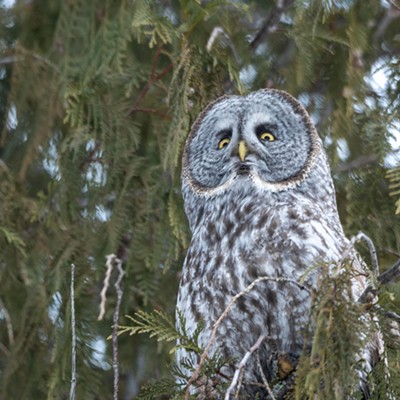During World War II, many posters encouraged women to volunteer or join the workforce. Women who did were called Rosies. The name came from several sources but not the now iconic “We Can Do It” image of a woman rolling up her sleeve that has come to be called Rosie the Riveter, Givan said. That poster only appeared at the Westinghouse Electric Company for a two-week period during 1942. It was part of an in-house effort to maintain production and reduce absenteeism.
“Probably fewer than 1,000 were printed,” said Jim Givan, owner of a collection of more than 1,000 posters from WWI and WWII including an original "We Can Do It."
In addition, Westinghouse didn’t use rivet guns. It was producing plastic helmet liners for the Army.
Rosie the Riveter can be attributed to Norman Rockwell, whose work appeared in one of the nation’s most popular magazines, the Saturday Evening Post. One cover featured a muscular woman in factory garb eating her lunch, rivet gun in her lap, foot on a copy of Hitler’s “Mein Kampf.” Her lunch pail reads “Rosie.”
Little-known during the war, the “We Can Do It” poster became popular when it was revived during the 1970s women’s movement.
More posters from the wars can be found in an exhibit running through July 16 at the Lewis-Clark Center for Arts & History.

